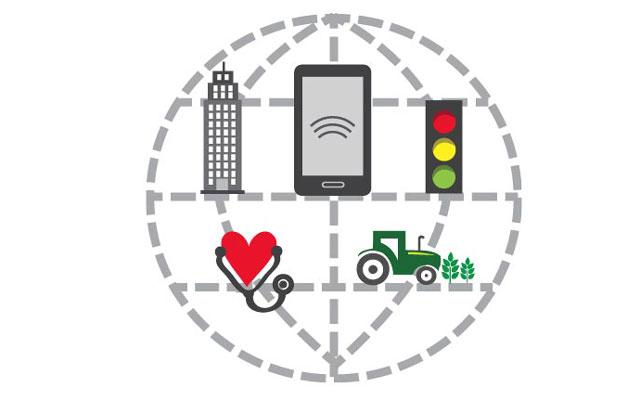U.S. carriers are racing to connect sensors, meters and wearable devices to their LTE networks before the companies that make these devices decide to instead use low-cost networks operating in unlicensed spectrum. For the companies that make connectivity chipsets, helping carriers capitalize on the “internet of things” represents a huge opportunity. Ahead of this week’s CTIA Super Mobility Week in Las Vegas, two leading LTE chipmakers have announced plans to help carriers move machines onto their LTE networks.
Sequans Communications said it will demonstrate the world’s first LTE Category M1/NB1 chipset in live communication with an LTE base station emulator this week. Sequans CEO Georges Karam said the company has been testing its chipset with Ericsson’s LTE base station equipment as well as with Nokia’s. Since these radio vendors serve all the major U.S. carriers, Sequans sees interoperability with Ericsson and Nokia as a path to carrier certification for its Category M1 chipset, called Monarch.
The Monarch chipset will be part of IoT connectivity modules made by manufacturers like Gemalto and U-Blox. Karam expects these modules to be priced below $10 each, making carrier LTE networks competitive with dedicated IoT networks using proprietary technology in unlicensed spectrum.
“There is a big fight in the market today for IoT connectivity,” said Karam. “You have the 3GPP angle, but you have from the other angle the Sigfox, the LoRa technology, all those proprietary technologies. … The carriers, if they don’t shorten the window for those kinds of devices, they will lose some of the market, so they need push as fast possible to get their network Cat-M ready so they can invite or motivate the users to move on their network if they have IoT applications, instead of going with some proprietary technology like LoRa and Sigfox.”
Just last week, AT&T announced plans for an IoT network in San Francisco, and Verizon Wireless said it hopes to launch Cat M1 devices on its network before the end of this year, a timetable viewed by some as highly aggressive. This week, the carrier announced a Cat M1 IoT solution for Neptune Water Technology. Neptune wants to reduce water waste by connecting meters to the internet.
Verizon has said that its Cat M1 chip partners include Sequans and Sony’s Altair, but the carrier also is working with chip giant Qualcomm for some IoT solutions. This week Verizon said Qualcomm will integrate the carrier’s ThingSpace platform into Cat M chipsets.
Follow me on Twitter.

